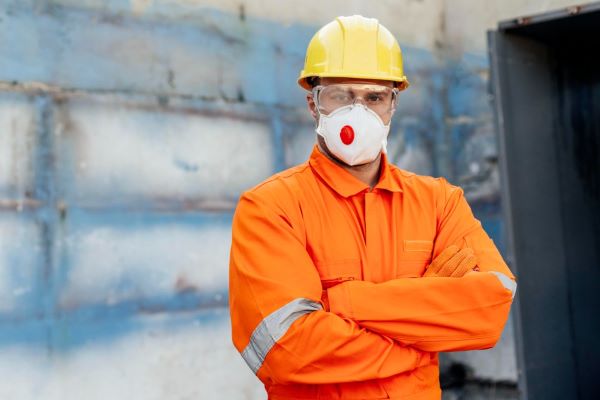5 Maintenance Tips For Prolong Life Of Fire-Resistant Workwear
When it comes to your safety on the job, fire-retardant workwear is your ultimate shield. Every day, it silently shields you from dangers in your workspace. But did you know that taking care of your fire-resistant workwear can significantly extend its lifespan and effectiveness?
What Flame-Resistant Workwear is?
Flame-resistant workwear is special clothing made to slow down the spread of fire or heat. It won't completely stop a fire but helps protect the person wearing it. It's like a shield that gives you time to escape a dangerous fire situation or stops it from worsening.
Flame-resistant clothing is designed to prevent burns when you're near flames or things that can cause a fire, like sparks from welding. It's made from special fabrics that have chemicals to make them burn slower. Some work clothes can also handle hot temperatures, but they're mostly for tasks like welding without fire.
What Does Fire-Retardant Workwear Do?
Fire-retardant workwear is like a protective shield that slows down fire or extreme heat. It's made to help you stay safe when you're working in situations where there might be flames or things that can start a fire. Instead of catching fire quickly, this special clothing buys you time to escape or prevents the fire from getting worse. It's like a safety jacket for people who work with fire or heat.
1. Proper Cleaning and Washing
How do you ensure your workwear stays clean and effective? Your fire-resistant workwear faces a constant barrage of dirt, grime, and contaminants in the workplace. To keep it performing at its best, you need to pay close attention to cleaning and washing.
Manufacturer know their products best and can guide you on the ideal washing and cleaning methods. Use a mild detergent and avoid harsh chemicals that could compromise the fire-resistant properties of your gear.
Power Tip: Opt for a front-loading washing machine as it's gentler on your clothing than top-loading machines. Always wash your workwear separately from regular clothes to prevent contamination.
2. Inspect for Damage Regularly
Fire-resistant workwear isn't invincible, and it can sustain damage over time. Regular inspections are essential for catching wear and tear early. How can you spot potential damage early on?
Start by examining your workwear before each use. Look for signs of fraying, holes, or damage to seams and zippers. Pay close attention to high-stress areas like elbows and knees. If you notice any problems, address them promptly to prevent further deterioration.
Power Tip: Keep a small repair kit handy, including fire-resistant thread and patches. This will allow you to mend minor issues before they escalate.
3. Proper Storage Matters
How you store your fire-resistant workwear when it's not in use can significantly impact its lifespan. Neglecting proper storage can lead to premature wear and tear.
Ensure that your storage area is free from chemicals, solvents, or any other substances that might compromise the fire-resistant properties of your gear.
Power Tip: Consider investing in a dedicated garment bag or closet for your workwear to protect it from environmental factors. Ideally, store your workwear in a cool, dry place away from direct sunlight. Hanging it up is preferable to folding, as it reduces creases that can weaken the fabric over time.
4. Follow a Routine Inspection Schedule
Regular inspections are essential, but it's equally important to establish a routine inspection schedule to ensure consistency. The question that usually arises in our mind is How often should you inspect your workwear?
Set aside time for a thorough inspection at least once a month, or more frequently if your workwear sees heavy use. Make it a part of your routine, and don't skip it. This proactive approach will help you catch any issues early on and ensure your gear remains effective.
Power Tip: Keep a maintenance log where you record inspection dates and any issues you discover. This log will help you track the condition of your workwear over time.
5. Retire When Necessary
Significant fraying or damage that cannot be repaired.
Fading or discoloration may indicate a loss of fire-resistant properties.
Any alterations or repairs that compromise the original design and function of the gear.
When you notice these signs, it's time to retire your workwear and invest in a new set to ensure your safety remains a top priority.
Power Tip: Consider recycling your old workwear if it's no longer usable. Many organizations accept used workwear for recycling purposes.
Conclusion
Your fire-retardant workwear is a critical piece of your safety equipment, and taking good care of it is essential. By following these five maintenance tips – proper cleaning and washing, regular inspections, proper storage, routine inspection schedules, and timely retirement—you can significantly prolong the lifespan of your gear.
You can find a variety of high-quality, long-lasting, and affordable fire-resistant clothing options at UNITO. Visit UNITO to buy top-notch fire-retardant clothing at discounted prices. Safe out there!
Also, read our other blog: Flame-Resistant Protective Gear: A Guide From Experts
Follow us on:
Facebook | Instagram | LinkedIn | Twitter | Google My Business




